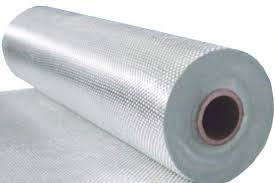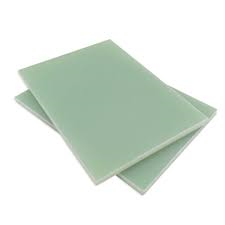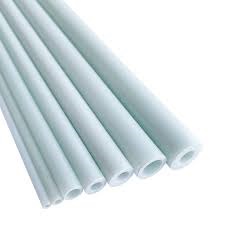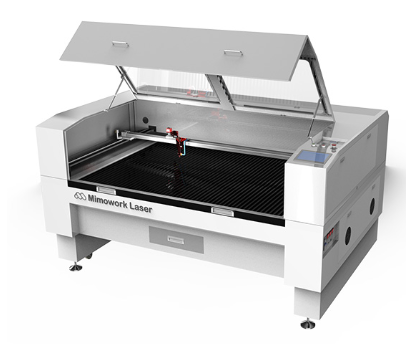How Do You Cut Fiberglass
What is Fiberglass
Introduction
Fiberglass, valued for its strength, light weight, and versatility, is a mainstay in aerospace, automotive, and DIY projects. But how do you cut fiberglass cleanly and safely? It’s a challenge—so we’re breaking down three proven methods: laser cutting, CNC cutting, and manual cutting, along with their mechanics, best uses, and pro tips.

Fiberglass Surface
Cutting Characteristics of Different Fiberglass Types
Fiberglass comes in distinct forms, each with unique cutting quirks. Understanding these helps you pick the right method and avoid mistakes:
• Fiberglass Cloth (Flexible)
- A woven, fabric-like material (often layered with resin for strength).
- Challenges: Prone to fraying and fiber “runaway” (loose strands that pull apart). Lacks rigidity, so it shifts easily during cutting.
- Best For: Manual cutting (sharp knife/scissors) or laser cutting (low heat to avoid melting resin).
- Key Tip: Secure with weights (not clamps) to prevent bunching; cut slowly with steady pressure to contain fraying.
• Rigid Fiberglass Sheets
- Solid panels made of compressed fiberglass and resin (thickness ranges from 1mm to 10mm+).
- Challenges: Thin sheets (≤5mm) crack easily under uneven pressure; thick sheets (>5mm) resist cutting and generate more dust.
- Best For: Laser cutting (thin sheets) or CNC/angle grinders (thick sheets).
- Key Tip: Score thin sheets first with a utility knife, then snap—avoids jagged edges.
• Fiberglass Tubes (Hollow)
- Cylindrical structures (wall thickness 0.5mm to 5mm) used for pipes, supports, or casings.
- Challenges: Collapse under clamping pressure; uneven cutting leads to 歪斜 (skewed) ends.
- Best For: CNC cutting (with rotational fixtures) or manual cutting (angle grinder with careful rotation).
- Key Tip: Fill tubes with sand or foam to add rigidity before cutting—prevents crushing.
• Fiberglass Insulation (Loose/Packed)
- Fluffy, fibrous material (often rolled or batched) for thermal/acoustic insulation.
- Challenges: Fibers scatter aggressively, causing irritation; low density makes clean lines hard to achieve.
- Best For: Manual cutting (jigsaw with fine-tooth blades) or CNC (with vacuum assist to control dust).
- Key Tip: Wet the surface slightly to weigh down fibers—reduces airborne dust.

Fiberglass Cloth (Flexible)

Rigid-Fiberglass-Sheet

Fiberglass Tubes (Hollow)

Fiberglass Insulation
Step-by-Step Directions To Cut Fiberglass
Step 1: Preparation
- Check and mark: Inspect for cracks or loose fibers. Mark cut lines with a scriber (stiff materials) or marker (flexible ones) using a straightedge.
- Secure it: Clamp rigid sheets/tubes (gently, to avoid cracking); weigh down flexible materials to stop sliding.
- Safety gear: Put on an N95/P100 respirator, goggles, thick gloves, and long sleeves. Work in a ventilated area, with a HEPA vacuum and damp cloths handy.
Step 2: Cutting
Pick the method that fits your project—no need to overcomplicate it. Here’s how to nail each one:
► Laser Cutting Fiberglass (Most Recommended)
Best if you want super clean edges, almost no dust, and precision (great for thin or thick sheets, airplane parts, or even art).
Set up the laser:
For thin materials: Use moderate power and faster speed—enough to cut through without burning.
For thicker sheets: Slow down and turn up power a bit to ensure full penetration without overheating.
Want shiny edges? Add nitrogen gas while cutting to keep fibers bright (perfect for car parts or optics).
Start cutting:
Lay the marked fiberglass on the laser bed, align with the laser, and start.
Test on a scrap first—tweak settings if edges look charred.
Cutting multiple pieces? Use nesting software to fit more shapes on one sheet and save material.
Pro tip: Keep the fume extractor on to suck up dust and fumes.
Laser Cutting Fiberglass in 1 Minute [Silicone-Coated]
► CNC Cutting (For Repeatable Precision)
Use this if you need 100 identical pieces (think HVAC parts, boat hulls, or car kits)—it’s like a robot doing the work.
Prep tools and design:
Choose the right blade: Carbide-tipped for thin fiberglass; diamond-coated for thicker stuff (lasts longer).
For routers: Pick a spiral-flute bit to pull up dust and avoid clogs.
Upload your CAD design and turn on “tool offset compensation” to auto-fix cuts as blades wear.
Calibrate and cut:
Calibrate the CNC table regularly—tiny shifts ruin big cuts.
Clamp the fiberglass tight, fire up the central vacuum (double-filtered for dust), and start the program.
Pause occasionally to brush dust off the blade.
► Manual Cutting (For Small/Quick Jobs)
Perfect for DIY fixes (patching a boat, trimming insulation) or when you don’t have fancy tools.
Grab your tool:
Jigsaw: Use a medium-tooth bi-metal blade (avoids tearing or clogging).
Angle grinder: Use a fiberglass-only disc (metal ones overheat and melt fibers).
Utility knife: Fresh, sharp blade for thin sheets—dull ones fray fibers.
Make the cut:
Jigsaw: Go slow and steady along the line—rushing causes jumps and jagged edges.
Angle grinder: Tilt slightly (10°–15°) to direct dust away and keep cuts straight. Let the disc do the work.
Utility knife: Score the sheet a few times, then snap it like glass—easy!
Dust hack: Hold a HEPA vacuum near the cut. For fluffy insulation, spritz lightly with water to weigh down fibers.
Step 3: Finishing
Check and smooth: Laser/CNC edges are usually good; sand manual cuts lightly with fine paper if needed.
Clean up: Vacuum fibers, wipe surfaces, and use a sticky roller on tools/clothes.
Dispose and clean: Seal scraps in a bag. Wash PPE separately, then shower to rinse stray fibers.
Is There a Wrong Way to Cut Fiberglass
Yes, there are definitely wrong ways to cut fiberglass—mistakes that can ruin your project, damage tools, or even hurt you. Here are the biggest ones:
Skipping safety gear: Cutting without a respirator, goggles, or gloves lets tiny fibers irritate your lungs, eyes, or skin (itchy, painful, and avoidable!).
Rushing the cut: Speeding with tools like jigsaws or grinders makes blades jump, leaving jagged edges—or worse, slipping and cutting you.
Using the wrong tool: Metal blades/discs overheat and melt fiberglass, leaving messy, frayed edges. Dull knives or blades tear fibers instead of cutting cleanly.
Poor material securing: Letting fiberglass slide or shift while cutting guarantees uneven lines and wasted material.
Ignoring dust: Dry-sweeping or skipping cleanup spreads fibers everywhere, making your workspace (and you) covered in irritating bits.
Stick to the right tools, take it slow, and prioritize safety—you’ll avoid these missteps!
Safety Tips for Cutting Fiberglass
● Wear an N95/P100 respirator to block tiny fibers from your lungs.
● Put on thick gloves, safety goggles, and long sleeves to shield skin and eyes from sharp strands.
● Work in a well-ventilated area or use a fan to keep dust away.
● Use a HEPA vacuum to clean up fibers immediately—don’t let them float around.
● After cutting, wash clothes separately and shower to rinse off stray fibers.
● Never rub your eyes or face while working—fibers can get stuck and irritate.

Cutting Fiberglass
| Working Area (W *L) | 1300mm * 900mm (51.2” * 35.4 ”) |
| Software | Offline Software |
| Laser Power | 100W/150W/300W |
| Laser Source | CO2 Glass Laser Tube or CO2 RF Metal Laser Tube |
| Mechanical Control System | Step Motor Belt Control |
| Working Table | Honey Comb Working Table or Knife Strip Working Table |
| Max Speed | 1~400mm/s |
| Acceleration Speed | 1000~4000mm/s2 |
FAQs of Fiberglass Laser Cutting
Yes. MimoWork Flatbed Laser Cutters (100W/150W/300W) cut fiberglass up to ~10mm thick. For thicker sheets (5–10mm), use higher - power lasers (150W+/300W) and slow speeds (adjust via software). Pro tip: Diamond - coated blades (for CNC) work for very thick fiberglass, but laser cutting avoids physical tool wear.
No—laser cutting creates smooth, sealed edges. MimoWork’s CO₂ lasers melt/vaporize fiberglass, preventing fraying. Add nitrogen gas (via machine upgrades) for mirror - like edges (ideal for automotive/optics).
MimoWork machines pair with dual - filter vacuum systems (cyclone + HEPA - 13). For extra safety, use the machine’s fume extractor and seal the cutting area. Always wear N95 masks during setup.
Any Questions about Fiberglass Laser Cutting
Talk with Us
You may be interested in
Any Questions about Laser Cutting Fiberglass Sheet?
Post time: Jul-30-2025


